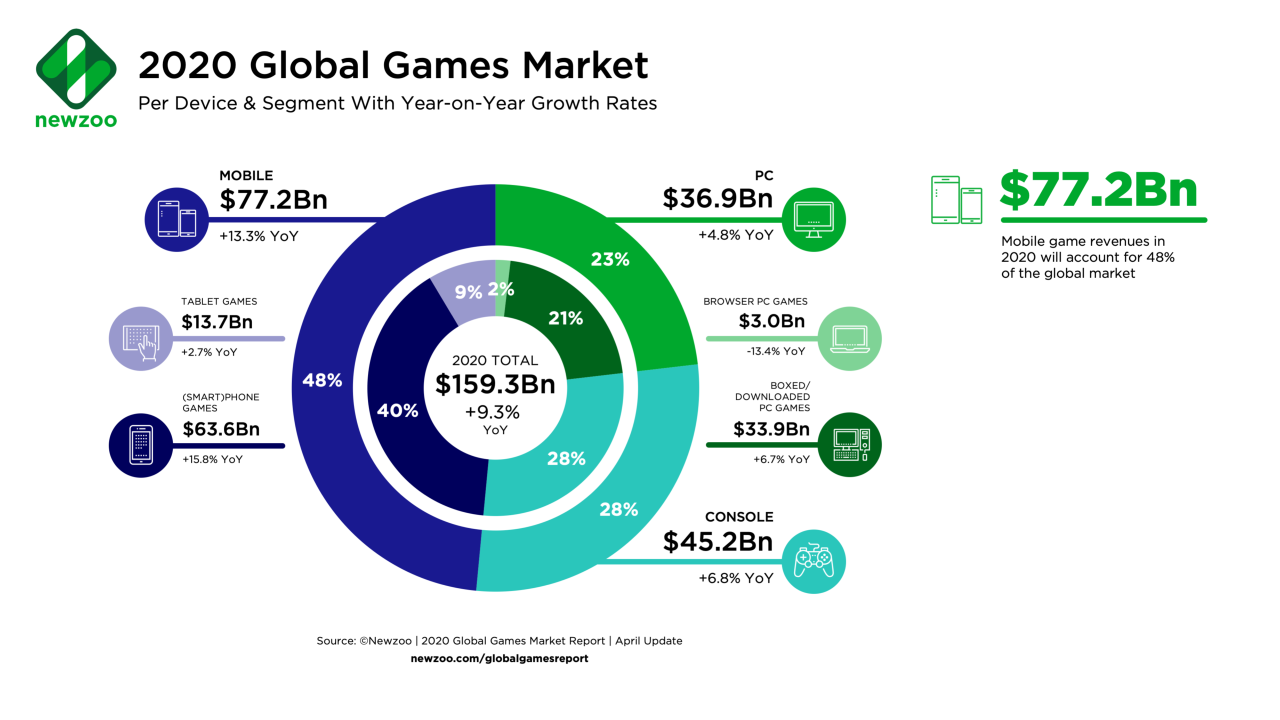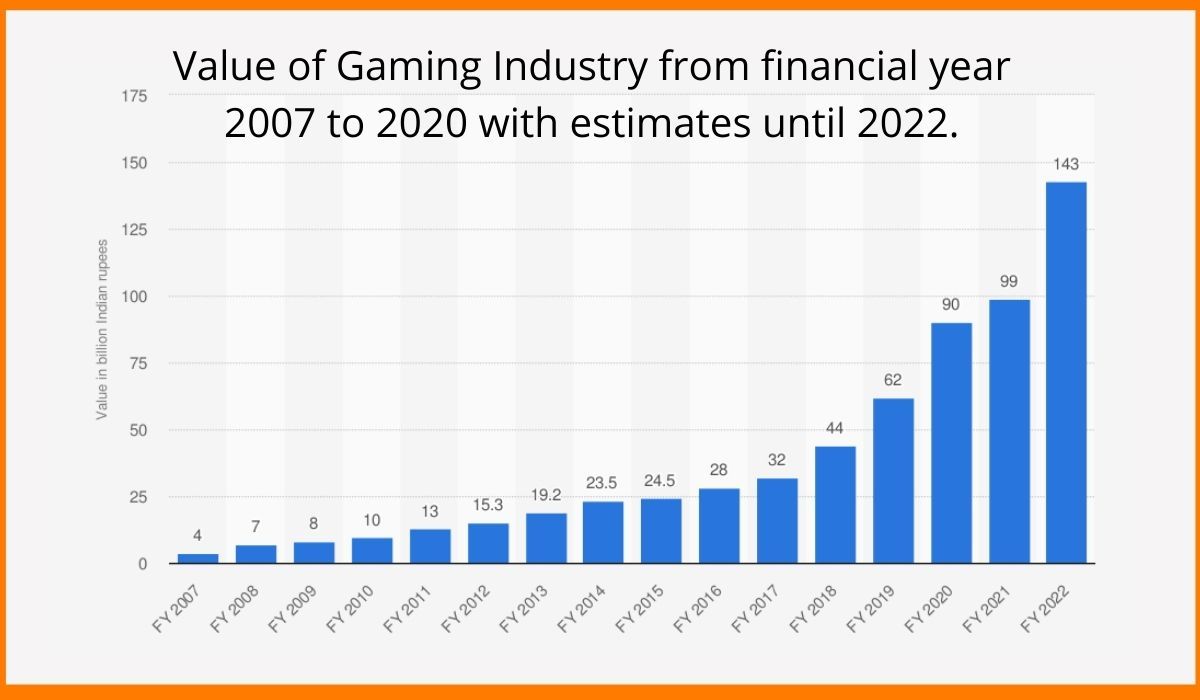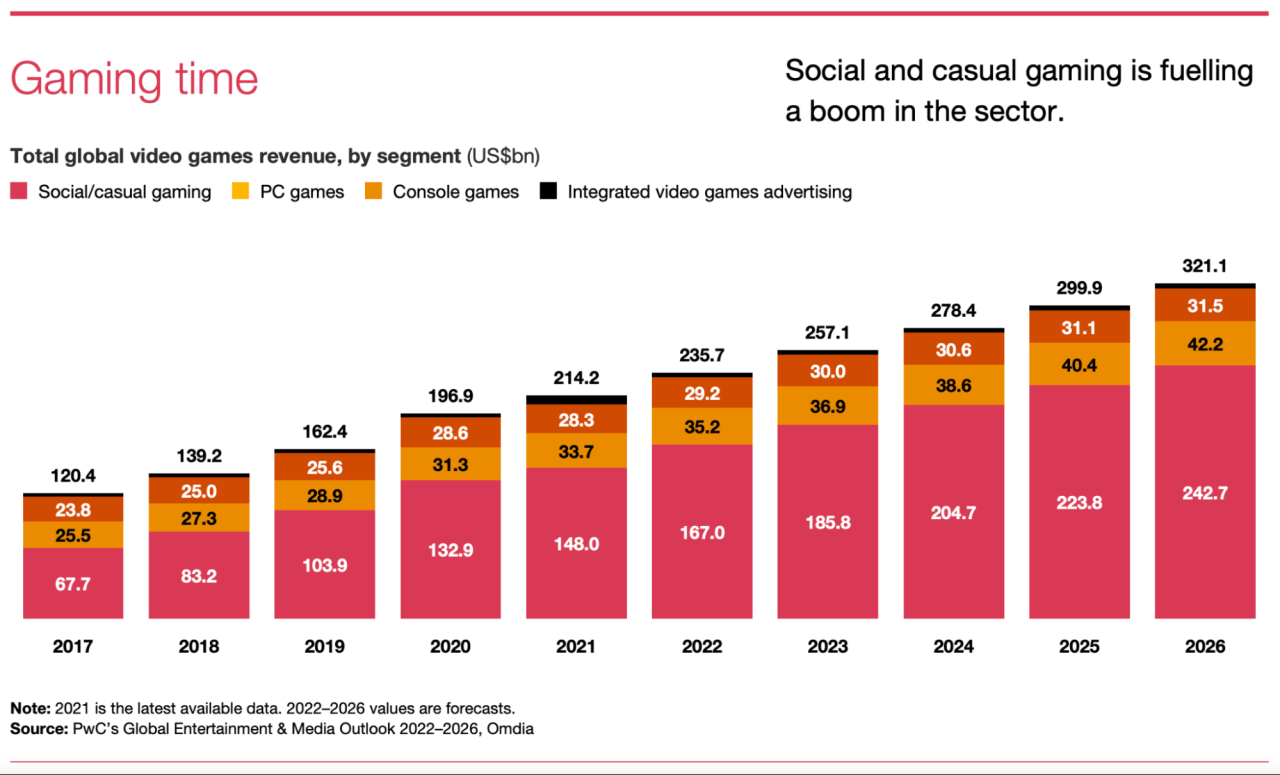Online Gaming Industry Growth

Online Gaming Industry Growth sets the stage for this exciting narrative, diving into the evolution of the gaming world with a focus on innovation and expansion. From the historical roots to the current landscape, this exploration promises to be a captivating journey for all enthusiasts.
Overview of the Online Gaming Industry Growth

The online gaming industry has experienced significant growth over the years, becoming a major player in the entertainment sector.
The history of online gaming dates back to the 1970s and 1980s when arcade games and early home consoles laid the foundation for what would become a thriving industry. With the advancement of technology and the widespread availability of the internet, online gaming has evolved into a multi-billion dollar industry.
Current Market Size and Trends
Online gaming has seen exponential growth in recent years, with the global market size reaching billions of dollars. The industry continues to expand, driven by factors such as the increasing popularity of mobile gaming, the rise of esports, and the development of virtual reality gaming experiences.
- The mobile gaming sector has become a dominant force, accounting for a significant portion of the market revenue.
- Esports, or competitive gaming, has gained mainstream recognition and has a massive following worldwide.
- Virtual reality gaming is on the rise, offering immersive experiences that push the boundaries of traditional gaming.
Main Factors Contributing to Industry Growth, Online Gaming Industry Growth
The growth of the online gaming industry can be attributed to various factors that have fueled its expansion and popularity.
- Technological advancements: Constant innovations in technology have allowed for more sophisticated games and immersive experiences.
- Global connectivity: The widespread availability of high-speed internet has made online gaming accessible to a global audience.
- Social interaction: Online gaming provides a platform for social interaction and connectivity, fostering communities and friendships.
- Monetization strategies: The industry has developed diverse monetization models, including in-game purchases, subscriptions, and advertising, driving revenue growth.
Technological Advancements in Online Gaming

The rapid technological advancements in recent years have played a significant role in driving the growth of the online gaming industry. These advancements have not only enhanced the overall gaming experience but have also opened up new possibilities for gamers around the world.
Impact of Virtual Reality (VR) and Augmented Reality (AR)
Virtual Reality (VR) and Augmented Reality (AR) have completely transformed the way we perceive and interact with games. VR technology immerses players in a virtual world, making them feel like they are part of the game, while AR overlays digital elements onto the real world. Both technologies have brought a new level of realism and interactivity to online gaming, enhancing the overall gaming experience for players.
- VR headsets allow players to step into a virtual world and experience games in a whole new dimension.
- AR technology enhances the real-world environment by adding digital elements, creating a more interactive and engaging gaming experience.
- Games like Pokemon Go have successfully integrated AR technology, blending the virtual world with the real world and creating a unique gaming experience.
Revolution of Cloud Gaming Services
Cloud gaming services have revolutionized online gaming by allowing players to stream games directly from the cloud without the need for high-end gaming hardware. This has made gaming more accessible and convenient for a larger audience, as players can enjoy high-quality games on various devices without the need for expensive equipment.
- Cloud gaming services eliminate the need for constant hardware upgrades, as the games are streamed from powerful servers in the cloud.
- Players can access their favorite games on different devices, including smartphones, tablets, and laptops, without compromising on performance.
- Services like Google Stadia and GeForce Now have paved the way for cloud gaming, offering a wide range of games to players worldwide.
Demographics and Player Behavior

In the ever-evolving landscape of online gaming, understanding the demographics of players and their behaviors is crucial for the industry’s growth and development.
Global Demographics of Online Gamers
- Online gaming has a diverse player base, with individuals from various age groups and backgrounds participating in gaming activities.
- According to recent studies, the average age of an online gamer is around 34 years old, dispelling the myth that gaming is only popular among the younger generation.
- Regions like Asia-Pacific and North America have a significant number of online gamers, contributing to the global growth of the industry.
Shift in Player Behavior and Preferences
- Over the years, there has been a noticeable shift in player behavior and preferences, with a growing interest in multiplayer online games that offer social interaction and collaboration.
- Players now seek immersive gaming experiences with high-quality graphics, realistic gameplay, and engaging storylines, leading to the popularity of genres like MMOs and battle royale games.
- The rise of esports has also influenced player behavior, as competitive gaming and watching professional tournaments have become integral parts of the gaming culture.
Increasing Number of Female Gamers
- One of the most significant trends in the online gaming industry is the increasing number of female gamers, challenging the traditional notion that gaming is a male-dominated space.
- Female players now make up a significant portion of the gaming community, bringing unique perspectives and playing styles to the table.
- Factors like inclusive game design, representation of diverse characters, and the rise of female streamers and content creators have contributed to the growth of female gamers in the industry.
Monetization Strategies in Online Gaming
In the rapidly growing online gaming industry, developers and publishers have implemented various monetization strategies to generate revenue and sustain their businesses. These strategies range from traditional models like subscriptions to newer approaches such as in-game purchases and loot boxes.
Freemium Model
The freemium model allows players to access the game for free but offers optional in-game purchases to enhance the gaming experience. This model has become increasingly popular due to its ability to attract a large player base while still generating revenue from a smaller percentage of paying players.
Subscriptions
Subscriptions involve players paying a recurring fee to access premium content or features within a game. This model provides a steady stream of revenue for developers and ensures a more consistent income flow compared to one-time purchases.
In-Game Purchases
In-game purchases allow players to buy virtual goods or items within the game using real money. These purchases can range from cosmetic items to gameplay-enhancing boosts, providing players with a sense of personalization and progression.
Loot Boxes and Microtransactions
Loot boxes and microtransactions have sparked controversy in the gaming community due to their potential to encourage addictive behavior and exploit players. While loot boxes offer random rewards for a price, microtransactions allow players to make small purchases for in-game items. Both strategies have significantly contributed to revenue generation but have also raised ethical concerns.
Ethical Considerations
The use of monetization strategies in online gaming has led to debates regarding player welfare, gambling-like mechanics, and the impact on gameplay balance. Developers are increasingly under pressure to adopt transparent and fair monetization practices to maintain player trust and uphold ethical standards in the industry.
Regulatory Challenges and Opportunities
In the online gaming industry, regulatory challenges play a crucial role in shaping the landscape for companies and players alike. Understanding the key challenges and opportunities in this area is essential for navigating the complex web of regulations.
Key Regulatory Challenges
- Legalization and Licensing: One of the main challenges is the varying legal frameworks across different countries, making it difficult for companies to operate globally.
- Age Restrictions: Ensuring compliance with age restrictions and responsible gaming practices is a key challenge for online gaming platforms.
- Consumer Protection: Protecting consumers from fraud, addiction, and other risks associated with online gaming is a major regulatory concern.
- Payment Regulations: Adhering to strict payment regulations and preventing money laundering through online gaming platforms presents a significant challenge.
Global Regulatory Approaches
- United States: The US has a complex regulatory landscape with individual states having the authority to legalize online gaming. Some states have embraced online gaming, while others have strict regulations against it.
- Europe: Many European countries have legalized and regulated online gaming, providing a more cohesive framework for companies to operate within the region.
- Asia: In Asia, online gaming regulations vary widely, with some countries embracing the industry while others impose strict bans.
Opportunities for Growth
- Harmonization of Regulations: As more countries legalize and regulate online gaming, there is an opportunity for a more harmonized global regulatory framework, enabling companies to expand their operations.
- Innovative Technologies: Emerging technologies such as blockchain and virtual reality present new opportunities for growth in the online gaming industry, with the potential to revolutionize the sector.
- Responsible Gaming Initiatives: By prioritizing responsible gaming practices and consumer protection, companies can build trust with regulators and create a more sustainable industry.
Popular Questions
What are the key factors contributing to the growth of the online gaming industry?
The growth of the online gaming industry is fueled by technological advancements, changing player behaviors, and innovative monetization strategies.
How have virtual reality and augmented reality impacted the online gaming industry?
Virtual reality and augmented reality have enhanced the gaming experience by offering immersive gameplay and interactive elements.
What are some of the main monetization models used in online gaming?
Monetization models in online gaming include freemium, subscriptions, and in-game purchases, each catering to different player preferences.
What are the regulatory challenges faced by the online gaming industry?
The online gaming industry faces regulatory challenges related to age restrictions, gambling laws, and data privacy concerns.
How has the demographics of online gamers shifted over recent years?
Recent years have seen a rise in the number of female gamers and a more diverse player base, reflecting the industry’s growing inclusivity.